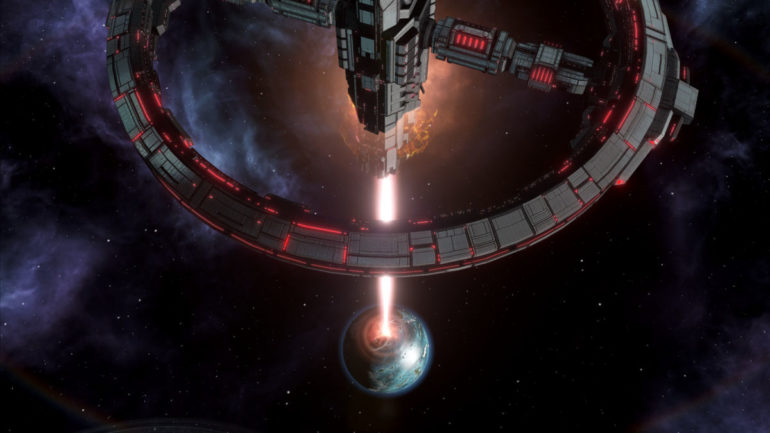The 4X strategy game is one of the most prolific and well known sub-genres of the greater strategy game umbrella. 4X games follow a common game design formula based on four features: eXplore, eXpand, eXploit, and eXterminate. Because of this design approach, most 4X games end up heavily focusing on conflict (see the last of the X principles) and military development and action.
Though many strategy games, like Total War or Starcraft that do focus almost solely on military conflict, can technically fit the 4X design formula, they are not treated as such, because 4X strategy games have a very particular game structure and gameplay loop.
This game structure can be broken into several phases: limited and humble starting conditions, extensive exploration of the unknown, expansion and takeover of free land, development and optimization of production, and, finally, the pursuit of victory (usually conquest through military means). And because there have been so many 4X games, it’s about time to highlight the best 4X strategy games of all time presented in chronological order.
1. Master of Orion (1993)

Developer: Simtex
Publisher: MicroProse
Platform(s): MS-DOS, Macintosh
The oldest game on the list, Master of Orion is considered the first and, arguably, greatest space 4X game.
Coming off the success of the first Civilization game in 1991, Master of Orion chose to expand the scale of the game from a single planet and move the action into space, making it a notable narrative quasi-sequel or successor to Civilization due to a switch to the science fiction setting. If Civilization was the progenitor of the entire 4X genre, then Master of Orion was the grandfather of space-focused 4Xs.
Some of the standout features of MOO were the large amount of varied and unique factions that gave the game a distinct sense of character, as well as a partially randomized technology tree, which added to the sense of exploration and discovery. These two features can be found to some degree in nearly entries on this list and to varying degrees of depth and success.
Though MOO was remade in 2016, the original still stands out to this day as being the origin point of the space 4X.
2. Sid Meier’s Alpha Centauri (1999)

Developer: Firaxis
Publisher: EA, Aspyr Media, Loki Software
Platform(s): PC, MacOS, Linux
The true science fiction sequel to Civilization developed by the creator of the series, Sid Meier, Alpha Centauri took inspiration from MOO’s sci-fi setting and brought it back down to planetary exploration, city development, and ground combat.
Alpha Centauri also included unique factions, each with unique leaders, affinities, philosophies, and diplomatic agendas. This made every playthrough of Alpha Centauri distinct as each faction had different approaches to victory conditions and, considering how well realized the factions were, Alpha Centauri very much felt like a sci-fi Game of Thrones or continuously evolving political forum that reflected different paths of development.
To give even further context to the player’s actions, the game also included an effective overarching narrative as the last vestiges of human civilization were attempting to save humanity in their struggle for Alpha Centauri. In addition to the great factions, the planet itself was a distinct character, which included climate change, hostile native creatures, and evolving environments that would respond to player decisions.
Firaxis ended up creating a spiritual successor in 2014 called Civilization: Beyond Earth, which unfortunately did not translate everything that made Alpha Centauri great, not to mention Alpha Centauri’s greatness overshadowing its more recent successor.
3. Sword of the Stars (2006)
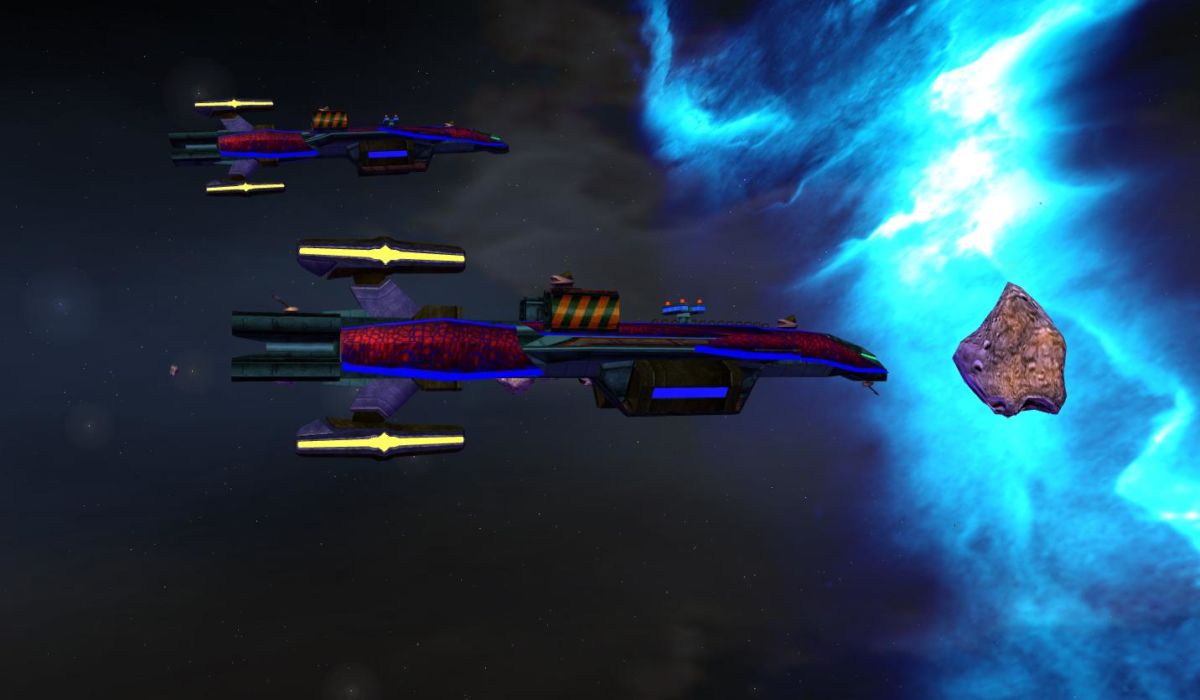
Developer: Kerberos Productions
Publisher: Lighthouse Interactive, Paradox Interactive
Platform(s): PC
The galactic scale 4Xs were bound for another evolutionary step forward and in 2006, Kerberos Productions delivered with their magnum opus, Sword of the Stars.
Because the 4X game principles are quite easy to follow and replicate, one of the many ways some of the best 4X strategy games try to stand out from the pack is with a distinct aesthetic or character to the game. SotS is a great example of this.
As I’ve already stated with MOO and Alpha Centauri, their unique factions help them reach the top of the 4X bunch. SotS is no different in this regard. Kerberos took the time to craft a unique aesthetic and story for every one of their factions where the philosophies of the factions can be seen in their own ship designs, in which the crow-like Morrigi focus on speed and drone swarm tactics, whereas the bloodthirsty Zuul focus on massed shock tactics with their ramshackle and quickly put together ships.
Alongside the excellent factions of SotS, the game had a vast and randomized tech tree, where every playthrough would change up available technologies ever so slightly. Furthermore, the game has a great cinematic combat system on top of a complex and deep strategic layer.
Anyone looking for a hardcore 4X strategy game, SotS is the franchise to consider.
READ NEXT: 20 Best PS4 Strategy Games You Should Play
4. Sins of a Solar Empire: Rebellion (2012)

Developer: Ironclad Games
Publisher: Stardock
Platform(s): PC
One of the most common approaches to 4X to best illustrate its scale is the reliance on a turn-based approach to the strategic and tactical (if any game included them) layers. SotS was a notable exception as it combined turn-based strategy with real-time tactics. In 2008, Ironclad took a bold decision and combined both the strategic and tactical layers of the 4X into one seamless real-time experience by launching the first iteration of Sins of a Solar Empire. But they didn’t stop there.
In 2012, Ironclad released a standalone expansion to SoaSE called Rebellion, which updated graphics, added new features, and expanded on the original three factions. Rebellion is the culmination of the SoaSE franchise and represents the best that it has to offer.
The seamless combination of the strategic and tactical into a real-time approach itself is unique and makes SoaSE an incredible 4X, but it also has well-defined factions and impressive large-scale tactical battles.
5. Warlock: Master of the Arcane (2012)
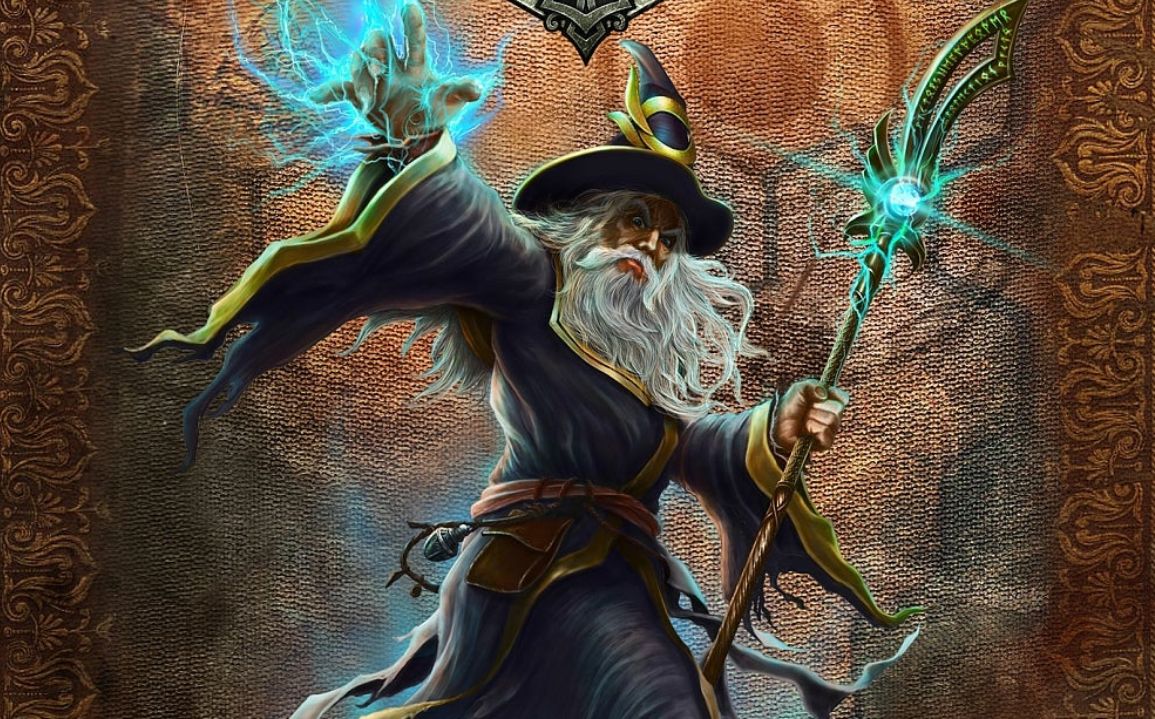
Developer: 1C: Ino-Co Plus
Publisher: Paradox Interactive
Platform(s): PC
Just as sci-fi was a perfect fit for the 4X sub-genre, fantasy can be an effective setting for strategy games and that is exactly what Warlock: Master of the Arcane did releasing around the same time as SoaSE: Rebellion.
Though fantasy and 4X games did appear in series like Age of Wonders (more on that later), Warlock took most of its inspiration from Civilization and focused primarily on the strategic layer of the game. What made Warlock stand out was that the developers used their relatively limited budget efficiently to craft an interesting take on the 4X strategy game.
The highlight features of the game are its many available varied units available to the player for recruitment and the implementation of magic into the game. Magic added an active (and some passive) method of affecting combat and resource management, something that wasn’t necessarily possible in other 4Xs.
A sequel was later released in 2014 called Warlock 2: The Exiled, which further developed on the concept, though the original as an overall composition felt more complete.
6. Endless Legend (2014)
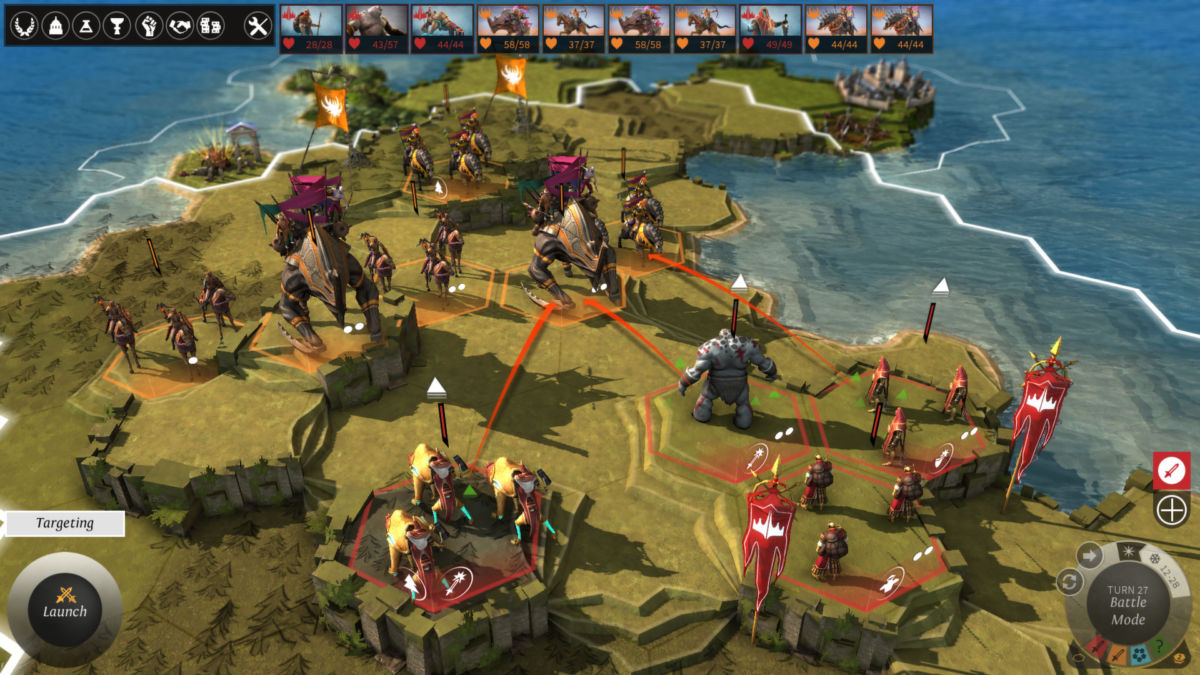
Developer: Amplitude Studios
Publisher: Iceberg Interactive, SEGA
Platform(s): PC, MacOS
Sticking with the fantasy setting, Endless Legend has some of the most innovative takes on both the fantasy setting and on 4X games as a whole. Endless Legend is part of a multi-genre franchise called the “Endless” series starting with Endless Space in 2012.
Endless Legend’s unique take on the fantasy setting is that it is a mix of science fiction and fantasy, science fantasy if you will, along the same lines as Star Wars or any other series that combines elements of science and fantasy. This gives the world of Auriga in the game a particular aesthetic and narrative as it’s suffering from a mysterious climate disaster.
Tied in with the interesting setting, Endless Legend is probably the only game on this list that pushes faction distinctiveness to the limit. The core gameplay loop for any faction across the games in the 4X sub-genre is always the same as it follows a general structure. Though Endless Legend doesn’t necessarily change the gameplay loop, it makes each faction flip some elements of 4X strategy games on their head.
For example, most factions need to found immovable cities to exploit resources and produce units. The faction called the Roving Clans can at any moment pick up its cities and move them. Or another faction called the Cultists (which was almost entirely designed by fans through a fan submission contest) can only ever have one city and they must win by spreading their influence across the minor factions. This subversive approach pervades every single faction and makes each playthrough as any faction truly unique gameplay-wise, rather than simply feeling like window dressing or some inconsequential minor stat change or aesthetic difference.
READ NEXT: The Most Influential Strategy Games of the 2010s
7. Star Ruler 2 (2015)
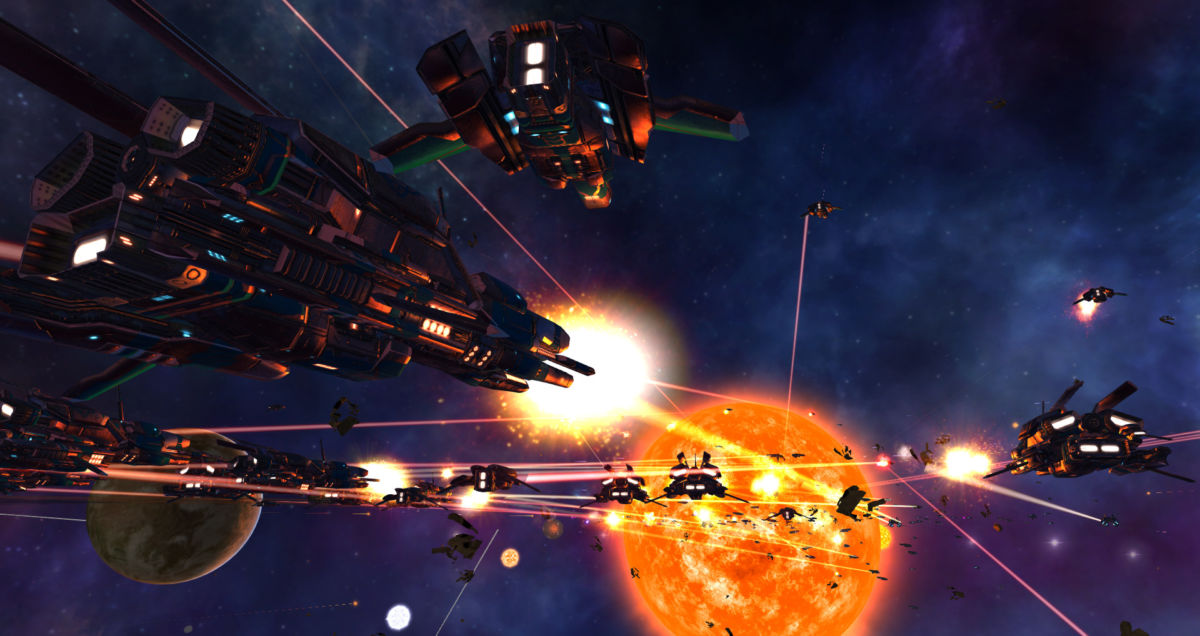
Developer: Blind Mind Studios, Glacicle
Publisher: Blind Mind Studios
Platform(s): PC, Linux
Switching back to the sci-fi setting, Star Ruler 2 is another great addition to the sci-fi lineup of 4X games. Its main standouts are its flexibility in ship design and absolutely massive and unparalleled scale, especially in tactical combat.
Just like SoaSE, it combines strategy and tactics together through a seamless real-time system rather than splitting them into distinct modes. The ship designer is arguably the most flexible and comprehensive of any sci-fi 4X out there as ship design is based on hexagonal modules that can fit in almost any way the player desires.
The overall defining features of Star Ruler 2 are flexibility and customization. It ends up leaning more on emergent storytelling and a kind of role-playing from the player for its narrative, compared to SoaSE, which had a greater narrative arc defining the various faction.
To accentuate the point of player flexibility and freedom of choice, in 2018, the game went fully open source and is now available to the public for free with some assembly required.
8. Galactic Civilization III (2015)
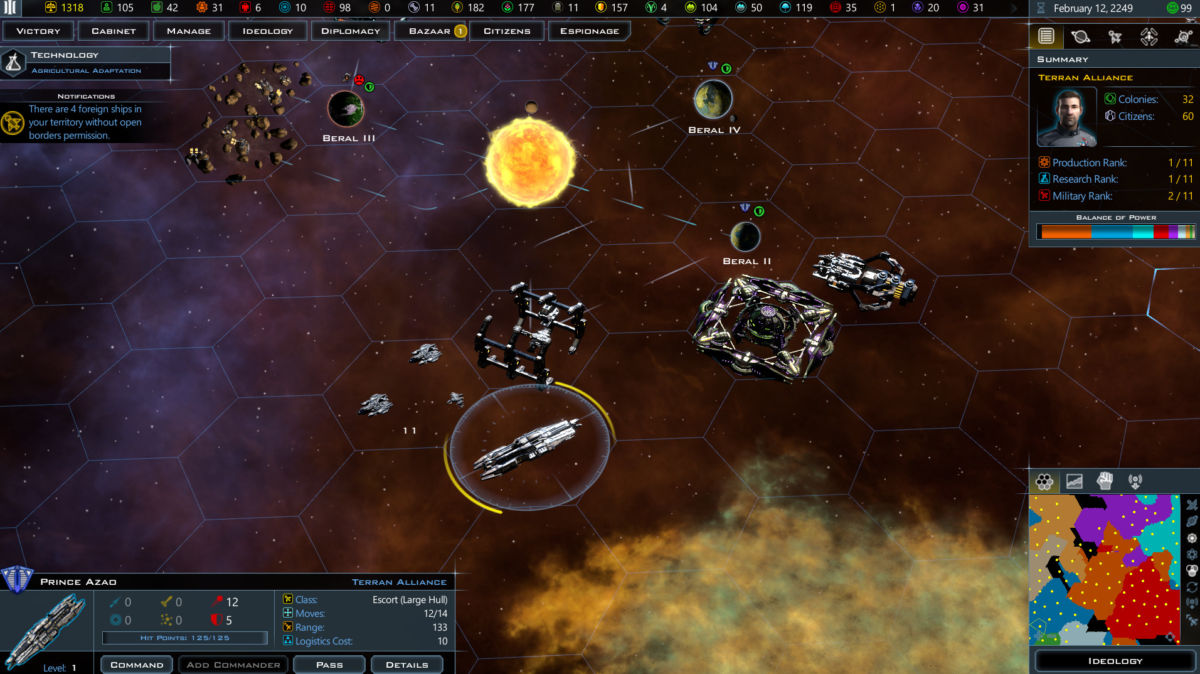
Developer: Stardock
Publisher: Stardock
Platform(s): PC
For a more traditional take on the 4X strategy sub-genre, Stardock’s third installment in the venerable Galactic Civilizations series is a solid modern 4X game.
It doesn’t necessarily do anything revolutionary, but what is present is executed well and with high production values. The strategic layer in particular of GalCiv 3 is strong with lots of options available to players for strategic decision-making and effective resource management.
The focus on the strategic layer allowed the developers to effectively encapsulate the strategic scale of GalCiv’s world. Stardock has also included a flexible ship builder where players can design the appearance of their ships to their heart’s content; however, they don’t have the ability to change weapon placement and subsystems, which does limit the feature.
Stardock has also been dedicated and energetic with their post-launch support as they have released several small and large DLC expansions, which added new factions and new mechanics.
9. Civilization VI (2016)

Developer: Firaxis Games
Publisher: 2K Games
Platform(s): PC, Nintendo Switch, Linux, iOS, PS4, Xbox One
2016 was a massive year for 4X strategy games as the godfather and king of 4X strategy games returned with a new installment in this long running series, Civilization VI. Both Civ V and Civ VI are great games in their own right, but for this list we limited ourselves to only entry per franchise. I chose Civ VI, especially since its latest post-launch content, as well as what it does for the series as a whole.
Though the evolutionary and developmental leap between Civ 5 and Civ 6, I would argue, is less revolutionary than Civ III to Civ IV or IV to V, Civ V took mostly everything that made the fifth installment great (with its expansions) and elevated it further. Some notable changes are the “unpacking” of the city into districts for greater integration of terrain in the city settlement process, the reworking of social policies into a kind of tech tree that runs parallel to the main science tech tree, and (with the Gathering Storm expansion) the more prominent integration of weather and climate into the game.
The Civilization series as a whole is the gold standard of 4X games and Civ 6 continues that same level of quality with a new cartoonish art style, which not only adds to the bright color of the game as a whole, but emphasizes the historical optimism that Firaxis chose to focus on in using human history as inspiration for their game.
Combat has been revamped to allow for unit merging into Corps and Armies, as well as introducing support units, allowing for a kind of unit stacking, something that was missing in Civ V. Finally, Civilization almost always knocks it out of the park with its faction modeling, which includes not only the units and unique strengths of the factions, but the music and architecture of cities as well for visual feedback. Civilization is definitely here to stay.
READ NEXT: 10 Best Strategy Games of 2019 You Should Play
10. Stellaris (2016)
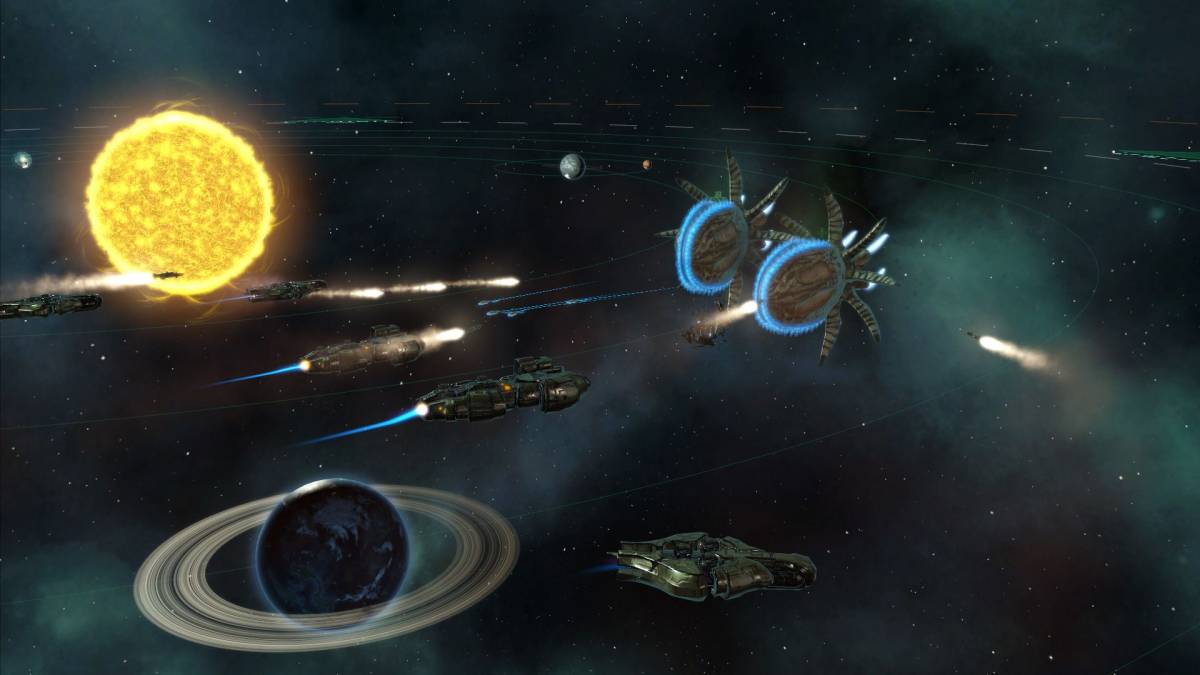
Developer: Paradox
Publisher: Paradox Interactive
Platform(s): PC, MacOS, Linux, PS4, Xbox One
A new juggernaut is born. Paradox is known for applying real-time elements into historically-inspired grand strategy games like Hearts of Iron 4 or Crusader Kings 2. These games are not 4X, though. Stellaris is the first foray for Paradox in taking their tried and tested real-time grand strategy structure into the realms of sci-fi 4X game.
I’ve talked about scale in previous games like Star Ruler 2 and GalCiv, where Star Ruler’s scale mostly focused on the size of combat and GalCiv does a good job with strategic scale. However, neither game can hold a candle to the depth of features and grand strategic scale that Stellaris sports. By scale I mean the options for galaxy size, the amount of moving parts at any given time, and the strategic implications of any player decision on other factions and aspects of their empire.
Moreover, Stellaris has gone through many evolutions, as well as expansions that have added and evolved the game further, indicating an effective feedback loop between the developers and players — a great combination to have for game longevity.
11. Stars in Shadow (2016)
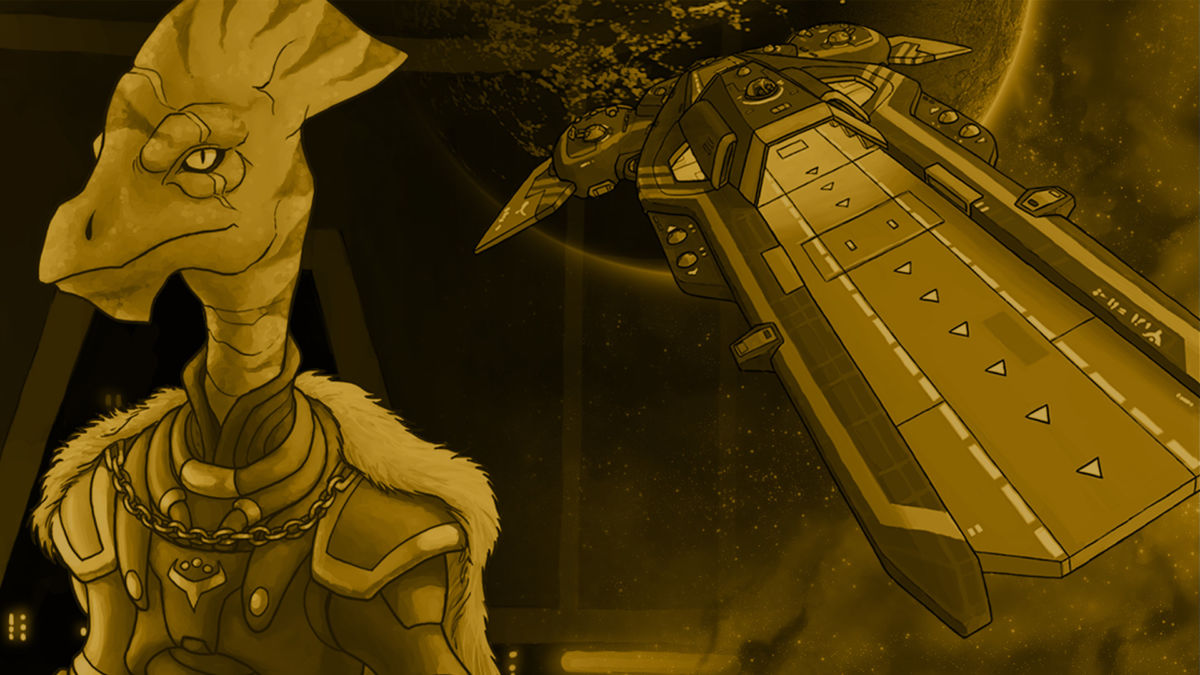
Developer: Ashdar Games
Publisher: Iceberg Interactive
Platform(s): PC
2016 was big for indie 4X games as well. Stars in Shadow is one such game and it makes it on this list of the best 4X strategy games for its unique artstyle and how solidly it executes its mechanics. Though the game was developed on a small budget, it certainly looks well-polished and crisp, both visually and in its mechanics.
SiS follows GalCiv 3 in that it doesn’t do anything revolutionary, but what it does it does well. One of the main criticisms of recent 4X sci-fi strategy games is that they forego combat in favor of a greater focus on the strategic layer. SiS includes an effective tactical turn-based combat system where the beautiful and distinct ship designs are on full display. Despite the combat not being incredibly deep, there is still plenty of space for careful tactical decision-making as players can control separate weapon systems on their ships that have their own strengths and weaknesses.
Furthermore, for a 4X strategy game, SiS is quite fast-paced and snappy in its movement. Depending on the size of a map and difficulty settings, players can play through campaigns pretty quickly, evolving their strategies and approaches. It is a great little gem that definitely deserves attention, if for the art alone.
12. Polaris Sector (2016)

Developer: SoftWarWare
Publisher: Slitherine Software
Platforms(s): PC
Polaris Sector is another indie 4X strategy game that rode the 2016 wave of releases alongside its bigger kin. Polaris Sector is a more war-focused 4X strategy game, where the game emphasizes the exploit and extermination features of 4Xs more than other strategy titles. The combat, as a result, is one of the main highlights of Polaris Sector due to the various ship roles and commands players can give to their ships.
Technology, inspired by SotS’ science system, is another major feature that requires more player input and economic thinking, as players assign a percentage of their science budget into various areas of technology (i.e. Chemistry, Biology, Physics, Mathematics, and etc.) that speed up or slow down research progress on a variety of techs.
Also, the game goes for a more retro 2D art style, which gives it a memorable, grainy and old-school feel that doesn’t get in the way of the combat action or the strategic decision-making.
READ NEXT: How To Take Strategy Games To The Next Level
13. Endless Space 2 (2017)

Developer: Amplitude Studios
Publisher: SEGA
Platform(s): PC, MacOS
Some 4X strategy games are carried by their gameplay and innovative features. Others are carried by the visual flare, excellent UI design, and lore. Endless Space 2 is one such 4X strategy game. Both Endless Legend and Endless Space 2 seem to have had an excellent UI designer and artist team leading the projects.
Aside from its visuals, Endless Space 2 has great faction variety, expanded even further in post-launch updates and content, with most factions have a unique twist to them that allows the player to take a unique approach in any given playthrough. The factions aren’t as subversive as in Endless Legend, but they possess the same spirit.
Otherwise, technology, resource management, and ship design work well and are put together in a beautiful package oozing with style.
14. Warhammer 40,000 Gladius: Relics of War (2018)
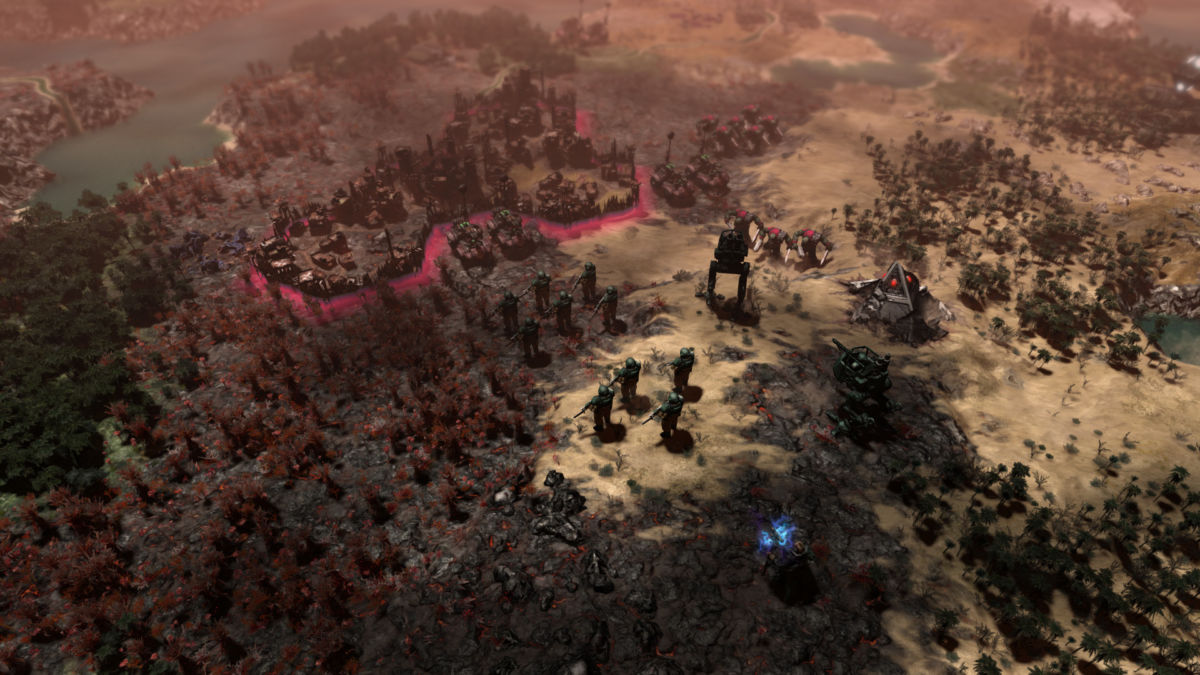
Developer: Proxy Studios
Publisher: Slitherine Software
Platform(s): PC, Linux
With the increased publicity of Games Workshop’s Warhammer fantasy and 40K settings, the Warhammer universe was bound to get the 4X strategy treatment at some point.
Warhammer 40K Gladius is that first foray, developed by a small studio that initially produced another 4X game called Pandora: First Contact. That game focused heavily on the player’s interaction with the wildlife of the planet and how to maneuver around or burn it out to take control of the planet. Gladius takes much inspiration from Proxy’s first 4X game.
This time, Proxy infused the variety, lore, and units of the Warhammer 40K universe into a combat-focused 4X strategy game that feels more like Starcraft or another classic RTS in turn-based form than anything else, due to how laser-focused Gladius is on the combat element of 4Xs.
However, Gladius does the extermination part of such strategy games very well. Each faction is distinct with their available units and have different modes of colonization. Some are harder to play than others, but ultimately the unique factions of the Warhammer universe prop this game up.
15. Age of Wonders: Planetfall (2019)
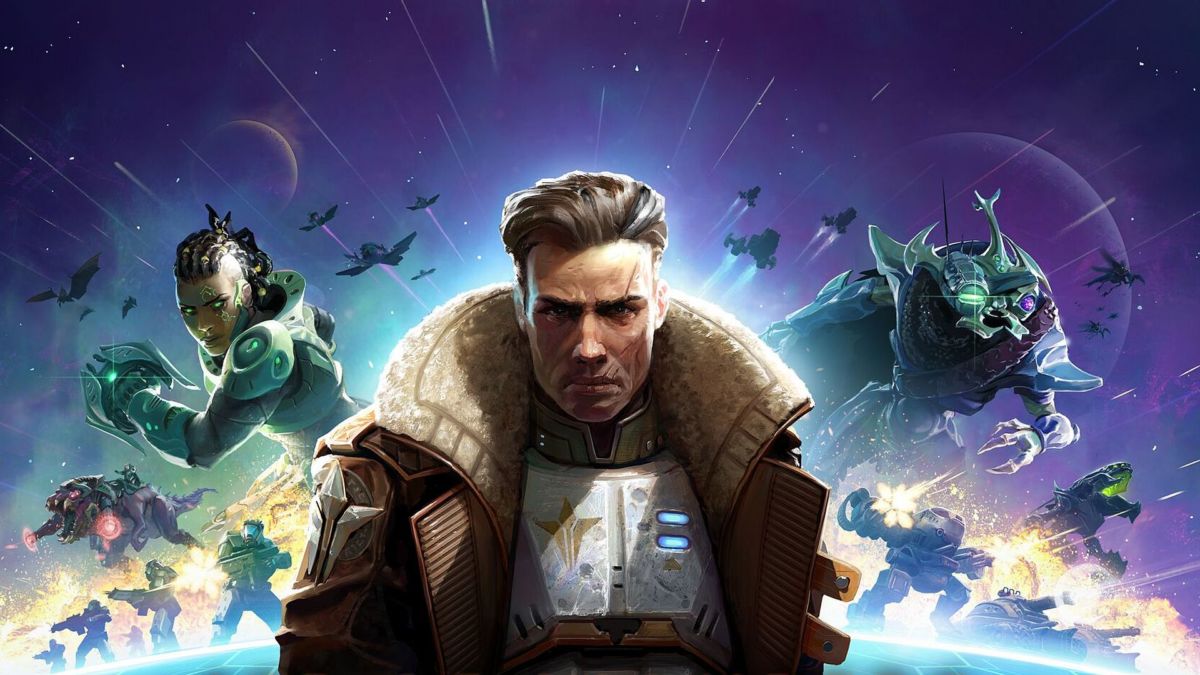
Developer: Triumph Studios
Publisher: Paradox Interactive
Platform(s): PC, PS4, Xbox One
The Age of Wonders franchise initially started out as a fantasy 4X strategy series focusing on the dynamics between magic and both strategic and tactical layers. Though the 2014 Age of Wonders 3 almost made the list, I made a final choice that it was Triumph’s foray into science fiction that ultimately proves the strength of this series as a whole. The main strengths of this 4X series is its awesome combat, flexible technology and faction system, and deep strategic layer.
The transition to science fiction opened up a broad range of options for combat as some factions focus on close quarters units, while others focus on ranged, forcing players to think carefully about their tactics when engaging against a variety of threats. Factions themselves are quite well-defined with differing specializations in weapons and unit types, but makes the game even better is the dynamic between factions and secret technology. When loading into a game, players can choose one of the six secret technologies, which can augment their faction through research and provide a unique science-focused victory.
Planetfall does a great job of emphasizing good economic decision-making, as compared to AoW 3, the developers put a lot more time in developing massive economic tech trees and varied biomes that affect resource gathering in a significant manner. Moreover, spells have been switched out for tactical, strategic, and intelligence operations that place unique effects on the tactical or strategic map, respectively. And since Triumph partnered with Paradox, which is known for developing complex diplomacy systems, Planetfall also benefits from expanded diplomacy, giving players even more breadth of options in their strategic decision-making.
MORE GAMING:
– 35 Best PS4 Exclusive Games You Should Play
– 32 Best Zombie Games You Should Be Devouring
– 20 Best Stealth Games To Sneak Into Your Library
Some of the coverage you find on Cultured Vultures contains affiliate links, which provide us with small commissions based on purchases made from visiting our site.
